| Acoustics of baroque, classical and modern flutes |
modern flute
|
E6 |
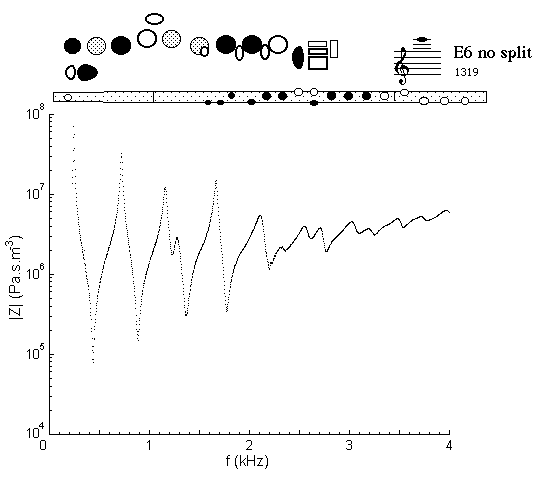
|
Fingering Acoustic schematic Non-specialist introduction
to acoustic impedance |
The standard fingering for E6 produces two different acoustic configurations (see diagram), depending upon whether or not the instrument has a 'split E' fingering mechanism. This is a clutch whereby the RH second finger closes one of the G# holes.
For the flute without a split E, should one think of this fingering as E4 with a double register
hole, or a cross-fingering which slightly flattens A4 and A5, and flattens A6 somewhat more? If we compare this graph with that for A4, we see a strong similarity, whereas the similarity with that for E4 is rather less. In the graph for E6, the third large minimum produces E6. The first two produce ~A4 and ~A 5. (The very small minimum near 1.2 kHz is unplayable.)
5. (The very small minimum near 1.2 kHz is unplayable.)
Note that, because of the acoustic similarity between this fingering and that for A5, it is difficult to slur between A5 to E6 on such a flute. With the split E mechanism, there is only a single open hole, which has effects discussed below.
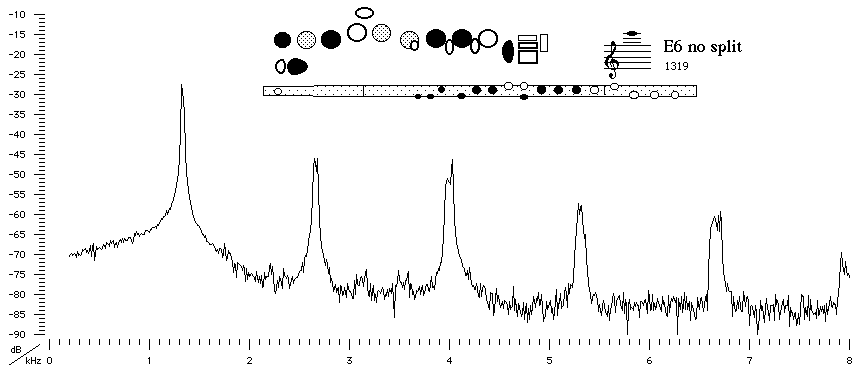
Sound spectrum
of a modern flute with a B foot played using conventional
fingering for E6 without
a split-E mechanism.
 5, excited at the rather strong minima at these frequencies.
5, excited at the rather strong minima at these frequencies.
![]()
![]()
![]()
![]()
![]() You can hear E6 without a split-E
played with conventional fingering
by Geoffrey Collins.
You can hear E6 without a split-E
played with conventional fingering
by Geoffrey Collins.
Split-E Mechanism |
modern flute B foot |
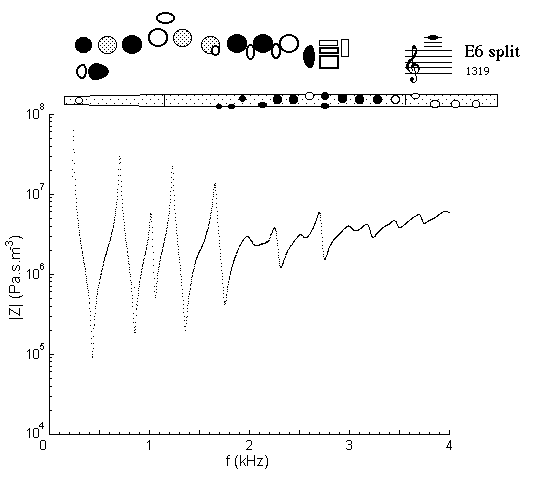
|
Fingering Acoustic schematic Non-specialist introduction
to acoustic impedance |
For the flute with a split E, should one think of this fingering as E4 with a single register hole, or a cross-fingering which slightly flattens A4 and substantially flattens A5 and A6? If we compare this graph with that for A4, we see a reasonable similarity at low frequency, but the similarity with that for E4 is rather less. In the graph for E6, the third large minimum produces E6. The first two produce ~A4 and ~Ab5. The higher harmonics of these two low notes have no support from impedance minima (they are diffuse timbres) and so they are not very stable. (The fourth large minimum plays a flat D7. The small minimum near 1.1 kHz is unplayable.)
Note that, because of the substantial acoustic differences between this fingering and that for A5, it is relatively easy to slur between A5 to E6 on such a flute. The single open hole acts somewhat like a register hole. Without the split E mechanism, there are two open holes, which have effects discussed above.
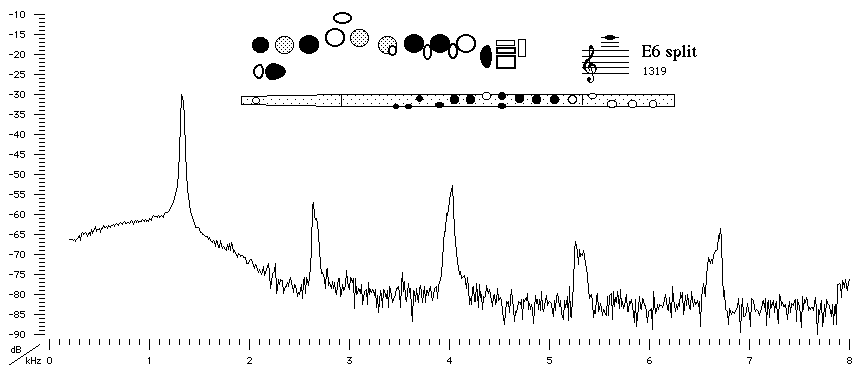
Sound spectrum of a modern flute with a B foot played using alternative
fingering for E6 with a split-E
mechanism .
![]()
![]()
![]()
![]()
![]() You can hear E6 with a split-E
played with alternative fingering
by Geoffrey Collins.
You can hear E6 with a split-E
played with alternative fingering
by Geoffrey Collins.
E6 with donut |
modern flute B foot |
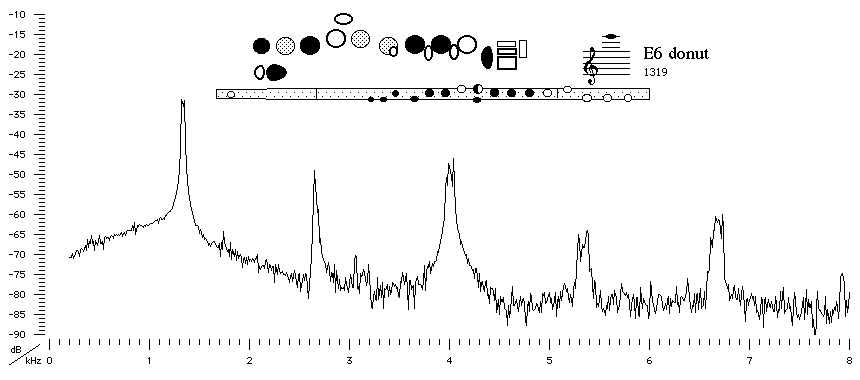
Sound spectrum of a modern flute with a B foot played using fingering for E6
with donut.
The donut (sic) is a metal insert that partially occludes one of the G# holes. It is sometimes fitted to flutes without split E mechanisms, and it reduces the size of the hole used as an unnecessary register hole for E6. Because the other G# hole is used to play G#, this does not affect intonation for that note, although it does make some difference to the timbre of A5/6.
![]()
![]()
![]()
![]()
![]() You can hear E6 with donut played by Geoffrey Collins.
You can hear E6 with donut played by Geoffrey Collins.
| Acoustic measurements are available for these flutes - modern B, modern C, classical C, classical D, classical flared, baroque Sound clips are available for modern B, classical flared and baroque |
To compare flutes, it is easiest to open a separate browser window for each instrument. |